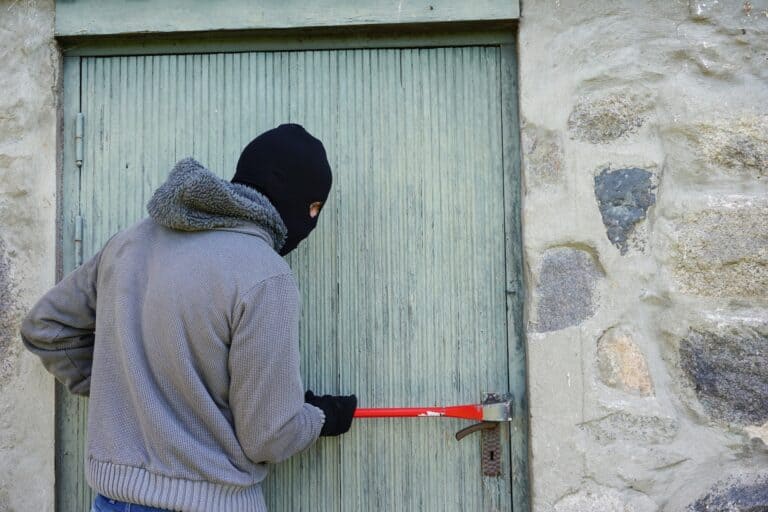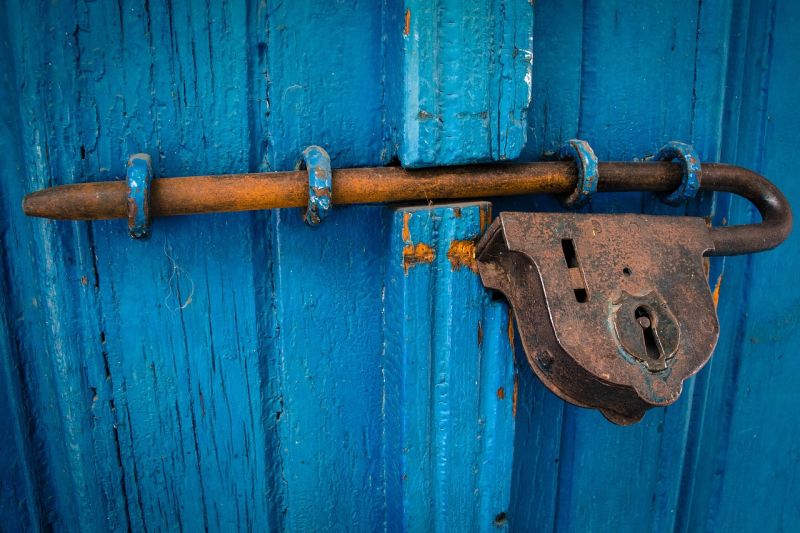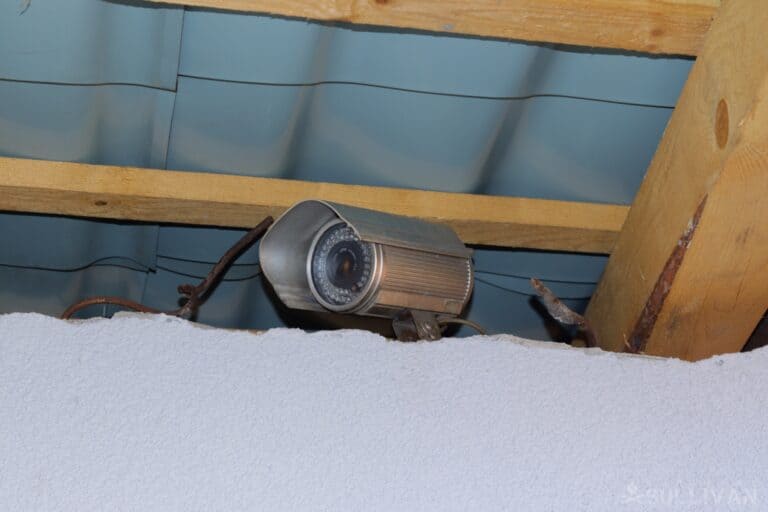Defending your home against invasion is more than just having a gun or club set handily about and being willing to use it when something goes bump in the night.
With home invasions occurring all the time all across the country, proper planning and preparation is key to thwarting these violent and potentially deadly criminal attacks.

A major part of that plan should involve physically fortifying and securing your home against unauthorized entry, whether surreptitious or dynamic.
Knowing the ins and outs of defensive strategies and hardware solutions will provide a two-fold increase in your security: first by making your home far less appealing to potential invaders and second by stymieing an attempted illegal entry, or failing that slowing it down drastically so you have more time to prepare.
In this article, we’ll be looking at all kinds of ways to fortify and protect every entryway and portal into your home, along with other helpful tips to set you up for success as a defender.
Table of Contents
Quick Word on Home Invasions
Many preppers often use the term home invasion and burglary interchangeably. While very similar, in that an intruder is illegally making entry into your home, there is one very important difference: a burglary occurs when you are not at home, while a home invasion occurs when you are, i.e. the dwelling is occupied.
A home invasion is therefore technically a subset of robbery. Home invasions are not strictly motivated by theft, however.
At any rate, you had better get educated on the subject: the U.S. DOJ reported over 1 million instances of home invasion across the country, with just over a quarter of them resulting in suffering violence at the hands of their attackers.
Serious stuff, and should be the prime motivator for you to beef up your home’s physical defenses. In addition, assuming a cat burglar is just after your belongings while you aren’t home it will make your house much harder to gain access to.
Harder to gain access to does not mean impossible: any defense or fortification, no matter how impenetrable or invincible it seems can be defeated with enough time, force, and determination. So too it goes for our would-be home invaders.
So be realistic about your defensive efforts; you don’t live in Fort Knox, a truly hardened structure, or in an old decommissioned missile silo. That being said, your home need not be completely impenetrable.
Home invaders like most criminals are predators, and so after easy prey. If your house appears “hard” versus “soft”, or they run into difficulty when attempting to break in, they are likely to bypass your house or abandon their attempt.
Burglar Methodology
Compared to burglars which usually strike in the morning and daytime hours while homes are (typically) unoccupied, home invaders usually strike between dusk and dawn, the better to catch the homeowner unawares and, hopefully, unprepared.
This means that any “mark” that is going to create too much hassle, make too much noise, need too much work, or attract too much attention is simply not worth the risk in almost all circumstances, and they will either skip yours as a candidate entirely or abandon their attempted entry when they start to bog down.
The reason is simple: increased attention means a higher probability of being caught and captured. A longer time to enter means more time that the occupants of the building can mount a meaningful defense, which equates to a greater risk of injury or death.
No criminal wants that when there is likely easier prey just over yonder, and even hardened criminals who do not fear pain or death would prefer to go on living, unmaimed.
But keep this in mind: the type of criminal that is more likely to commit a proper home invasion is more likely to surveil the target than to pick a house at random. You, or your house, were chosen for a reason. Perhaps the kind of car you drive. Maybe the nice, fat TV boxes left on the curb.
Perhaps the kind of car you drive. Maybe the nice, fat TV boxes left on the curb. Perhaps your chronic posting about your upcoming lengthy vacation, or bragging about your prized guns/jewelry/metals/whatever on social media traveled to the wrong set of ears. Now you have an unsavory but interested party casing your house and the rest of the neighborhood.
You may simply be a person who looks weak, unaware, or easy to overcome. Women living alone are especially high-risk targets for exactly this kind of activity.
Whatever the reason you were targeted, most home invaders will go through at least a short observation period to weigh their chances: assessing routes in and out, how likely they are to be observed by neighbors, etc. If your property appears properly “hardened” then they may abort.
Home invaders may make entry stealthily or loudly, depending on their preferences and their assessment of your home and grounds.
The most common cause of entry by far is through an unlocked door or window, followed by breaking through a glass door, then kicking open a door, then lastly entry through a window by breaking it.
Hardening Your Home and Entryways
When I use the word hardening, or harden, throughout this article, I have not been referring strictly to physical fortifications to withstand a direct assault.
Yes, better doors, bars, and so forth are certainly included in this list, but they are not the whole of hardening. Hardening also includes things like perimeter lighting, security systems with cameras or alarms, and defensively adapted foliage.
It is tough to see how lights and plants “harden” your home, but look at it from the perspective of a bad guy: a house with a well-lit perimeter, especially one that is motion activated, makes it much harder to approach the home and enter it without being observed. All predators, and roaches, love the dark.
Carefully selected and cultivated plants serve valuable defensive purposes by making windows or doors harder to approach, either by sporting formidable thorns and spines or by making a bunch of noise when moved through. Either has defensive applications for the clever home defender.
Aside from that, though, much of your work will be directed toward fortifying doors and windows against unauthorized access. Below we will address them category by category to give you a list of potential improvements you can make to any sector.
Note that most of these improvements will be effective standalone, that is each upgrade or technique serves to make your home that much harder to break into. And just like Voltron, the more you can plug in the better it gets. Try to achieve or execute as many as you can.
Any improvements that must be used in conjunction with others for best effectiveness will be noted in the text.

Entryway Security Upgrades and Procedures
Doors
- ALWAYS LOCK YOUR DOORS! All doors stay locked and bolted unless you are opening them. No exceptions. Hard to believe this is still advice that must be given in 2018, but alas…
- Hide well all spare keys. Scumbags know all the common places for a spare key and are highly likely to check under mats, pots, light fixtures, and so on. Make sure any spares are well hidden in a place only you can find or would know to look. Consider a buried key, cleverly blended false rock or other container, and so forth. Don’t use it unless you must! If someone observes you accessing the key it is compromised, and a liability.
- Upgrade all exterior doors. All should be solid core at the minimum, and preferably heavy, reinforced doors. Don’t forget the door going from your home into a garage, as many home invasions occur through there once the bad guys penetrate the garage itself.
- Install enhanced locks and hinges. Choose locksets based on strength and resistance to picking. Hinges should similarly be made of high quality steels with multiple screw holes for stronger attachment to both door and jamb.
- Use long, strong screws for door hardware. The best hinges and locks in the world are meaningless if you attach them with dinky, short screws. Screws that go 4” or longer into the surrounding jamb and the door itself will be far more resilient against attempts to kick or ram the door than standard screws.
- Install Anti-kick/ram device. Devices of this nature are a simple add-on to a door that transfers the shock and stress of a kick from the weak screws holding the lock in place to the rest of the door frame. Extremely effective, easy to install and affordable. A must for all exterior doors. Door Devil is a good one.
Windows
- ALWAYS LOCK YOUR WINDOWS! Even second floor and higher windows, same as with your doors, above.
- Consider Mylar or other anti-shatter film. Appliqués like this will greatly increase the windows resistance to shattering. This is especially a must-have for large windows and sliding glass doors, as these are prime entryways for criminals.
- Upgrade window frames. This is important to install in conjunction with mylar film, especially on older windows, as the frames themselves may be the weak point in the system and vulnerable to being knocked out entirely.
- Don’t forget the basement and skylight windows. Even very small ones. You’d be shocked at how small a space a criminal may squeeze into. You may use anti-shatter film, heavy metal mesh or even bars to close off small, ground-level windows from entry. If using either of the latter two have a plan for how you can use such a window as a fire escape if necessary.
- Install tint or sun shades. Either of these options will make it that much harder for invaders to see inside your home, making it more difficult to collect information as well as see who or what may be waiting inside.
- Install alarm on every window. Set to trip upon breakage or vibration. See more on alarm systems below.
- Lock window travel. This may be a built-in feature on your windows or one you’ll need to retrofit. Basically, you want to ensure that no window can be opened wide enough to admit human passage even if the window lock is defeated. This means an intruder now has to commit to making more noise to gain access.

Security Systems
- Install security alarm. A good alarm will be set to sound whenever a window is broken, motion is detected at any exterior doorway, or whenever motion is detected in an interior zone (even when you’re home, if going to bed). Alarm system choice is another article entirely, but whatever you choose make sure it has backup power and monitoring, and a keypad in your master bedroom.
- Install exterior cameras. At least covering the front and rear doors to the home. An additional camera that lets you view the area immediately around the door is a good idea also.
- Install perimeter lighting around your entire home. Preferably wired to motion activate. Invaders will want the cover of darkness to perpetrate their deeds. Deny them the advantage. Also, install a light to light up any likely hiding place in your yard or around exterior sheds and outbuildings.
Other
- Keep fences and perimeter shrubs short. Privacy is nice, but if your neighbors cannot see past them that makes your property more appealing to thieves.
- Plant and cultivate defensive shrubbery. Under every window and around any blind spots where they will grow near doors. Every climate has a species or three that is adorned with sharp thorns, piercing spines or is highly noisy when disturbed. This will make entry more difficult overall, is a deterrent to entry in the first place, and failing that will channel attempts at entry to the strongest portals; your now-upgraded exterior doors.
- Lock up all tools and ladders. Either can be used for easier entry to your home, either by mechanical advantage or access to “softer” entry points like second-story doors, windows, and vents.
- Secure sliding glass doors. These are perennial favorites of invaders because they are easily smashed and allow fast movement into the home, and additionally have crappy, easily defeated locking systems. Start by mylar-ing the glass itself to prevent breakage, then install appropriate lengths of bar or rod in the bottom and upper tracks to prevent opening and removal of the door respectively.
Secure Your Entry Points Today
Securing your home against illegal entry seems like a tall order, but much of what you can do is common sense and also low-cost.
With some thoughtful planning you can greatly enhance your home’s defensive posture and also make it far less appealing to any potential home invader who is “interviewing” your neighborhood looking for an easy mark.
So keep your windows locked, deadbolts bolted, and alarms on: don’t let a burglar even consider your house for a moment.
You can find even more ways to improve your home security here.


Charles Yor is an advocate of low-profile preparation, readiness as a virtue and avoiding trouble before it starts. He has enjoyed a long career in personal security implementation throughout the lower 48 of the United States.
